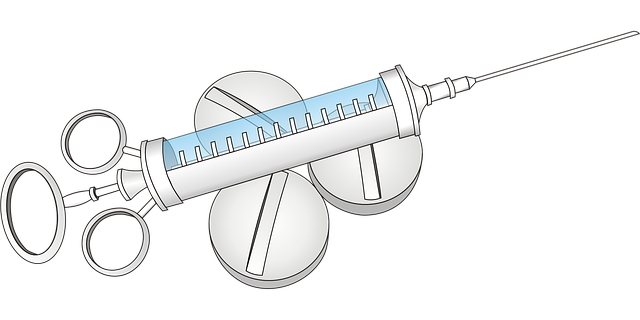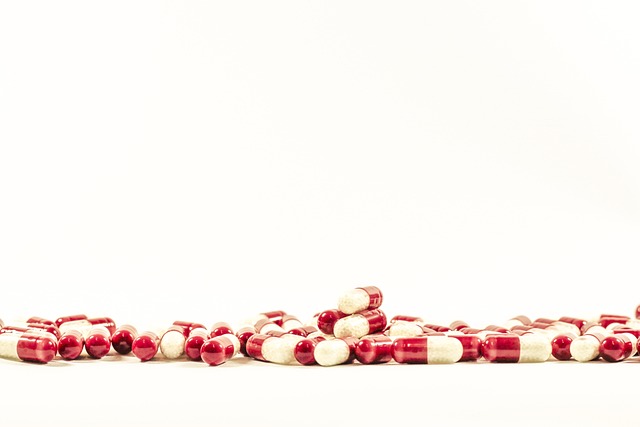GLP-1 drugs replicate natural hormone GLP-1 to manage type 2 diabetes by regulating insulin and glucagon. Efficacy requires personalized dosing based on patient factors like age, BMI, and side effects. Subcutaneous administration is common, offering ease and sustained blood levels. Dosing strategies vary between medications and patients, with adjustments for glycemic control. Long-term therapy enhances glycemia, cardiovascular health, and weight management. GI side effects like nausea can arise but are manageable through gradual dosing and lifestyle changes. Patient education emphasizes adherence, proper administration, and healthy habits for optimal outcomes.
GLP-1 receptor agonists, a class of drugs designed to mimic the effects of the gut hormone GLP-1, have emerged as powerful tools in diabetes management. This article delves into the nuanced world of GLP-1 drug dosing and administration, offering insights into their mechanism of action, personalized dosing approaches, and various delivery methods. We explore how optimal regimens, while considering common side effects, can enhance patient adherence and lifestyle integration.
Understanding GLP-1 Receptor Agonists: Mechanism of Action

GLP-1 receptor agonists are a class of medications designed to mimic the effects of the natural hormone glucagon-like peptide-1 (GLP-1). These drugs play a crucial role in managing type 2 diabetes and have gained significant attention for their potential benefits. By activating GLP-1 receptors, these agonists stimulate insulin secretion in a glucose-dependent manner, helping to lower blood sugar levels. This mechanism is particularly effective during meals when blood glucose tends to rise.
GLP-1 drugs also suppress glucagon release, which reduces the production of glucose by the liver. Additionally, they slow down gastric emptying, leading to a feeling of fullness and reduced appetite. This multi-faceted action contributes to their effectiveness in weight management and makes them promising candidates for various metabolic disorders. The understanding of these mechanisms has revolutionized diabetes treatment, offering new hope for improved glycemic control and overall patient well-being.
Dosing Considerations: Individualized Approach for Optimal Efficacy

When considering the dosing and administration of GLP-1 receptor agonists, it’s crucial to adopt an individualized approach for optimal efficacy. This is because GLP-1 drugs exhibit variable effects across patients, influenced by factors like age, body mass index (BMI), comorbidities, and previous treatments. A tailored strategy not only enhances therapeutic outcomes but also minimizes the risk of adverse reactions.
Healthcare providers should closely monitor patient responses to dosing adjustments, regularly reviewing blood glucose levels, weight changes, and any reported side effects. This dynamic approach allows for personalized modifications in GLP-1 drug regimens, ensuring each patient receives the most effective and safe treatment for their specific needs.
Administration Routes: Subcutaneous vs. Intravenous Delivery

The administration route plays a significant role in the effectiveness and patient experience of GLP-1 receptor agonists. The most common method is subcutaneous delivery, which offers several advantages. This route allows for easy administration, typically once or twice daily, using autoinjectors or pre-filled syringes. Subcutaneous dosing enables the drug to reach systemic circulation, providing sustained blood levels and thus improving glycemic control.
In contrast, intravenous (IV) delivery is less common but provides a faster and more direct route to the bloodstream. IV administration is often reserved for specific clinical scenarios, such as critical care settings or when rapid glucose control is needed. While it offers quicker onset of action, IV dosing is less convenient and may require more frequent administrations compared to subcutaneous routes.
Frequency and Duration: Optimizing Treatment Regimens

The optimal dosing frequency and duration for GLP-1 receptor agonists vary depending on the specific medication and patient needs. Typically, these drugs are administered once or twice daily via subcutaneous injection. Starting doses are often lower to minimize side effects, with gradual increases allowed based on individual responses. For many GLP-1 drugs, a once-daily dosing regimen is preferred due to its convenience. However, some patients might require more frequent administrations for better glycemic control.
Duration of treatment plays a crucial role in the success of GLP-1 therapy. Long-term use has been shown to improve not only glycemia but also cardiovascular outcomes and weight management. Healthcare providers should regularly assess patient progress, considering dose adjustments or medication switches if desired outcomes are not achieved after an appropriate trial period. Optimizing these parameters is essential for ensuring effective and safe GLP-1 drug therapy.
Common Side Effects: Managing Gastrointestinal Disturbances

GLP-1 receptor agonists, while highly effective in managing blood sugar levels, are not without their side effects. Common gastrointestinal disturbances reported by users include nausea, vomiting, and diarrhea, often occurring during the initial stages of treatment. These symptoms usually subside as the body adjusts to the medication but can persist or reoccur in some individuals.
Managing these side effects involves a combination of strategies. Patients are advised to start with lower doses and let their bodies acclimate gradually. Eating smaller, more frequent meals and staying hydrated can also help alleviate gastrointestinal discomfort. Additionally, patients should discuss any persistent symptoms with their healthcare provider, as adjustments to the dosing or medication type might be necessary.
Patient Education: Adherence and Lifestyle Integration

Patient education plays a pivotal role in ensuring successful outcomes with GLP-1 receptor agonists. It’s crucial to emphasize the importance of adherence to prescribed dosing regimens and highlight the integration of these drugs into daily routines. Patients should be taught how to administer the medications, understanding the timing and frequency is key to maximizing their benefits. Lifestyle modifications, such as a balanced diet and regular physical activity, should also be incorporated, as GLP-1 drugs often work synergistically with healthy habits for optimal blood sugar control. Encouraging open communication between patients and healthcare providers can facilitate adjustments to dosing or lifestyle plans based on individual needs and challenges.
